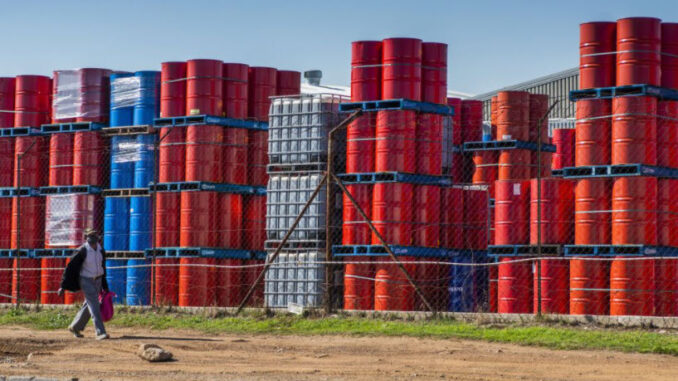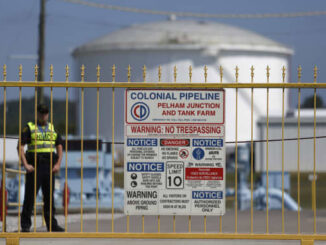
Any sharp oil sell-off, like the one this week, always has a clutch of plausible explanations and a sense that some sure-bet trade has unwound in a rout. And that’s almost certainly true. But there’s a far more prosaic force dragging on the market’s enthusiasm.
After Thursday’s plunge and a little more air leaking out as of early Friday morning, crude futures are trading about 7% below where they closed Wednesday. The narrative heading into this week was that OPEC+ discipline combined with accelerating recovery from Covid-19 and a dash of stimulus-inspired inflation would keep pushing oil prices higher. Money managers’ net length in the two biggest crude contracts combined was bobbing around its highest level since late 2018; speculative money had flowed in since the first successful vaccine tests were announced in early November. There was heady talk of a new “supercycle.”
Then Fed Chair Jerome Powell’s dovish performance Wednesday dented the inflation argument, and Europe’s cack-handed vaccination program dimmed those hopes somewhat. Other factors piled on. Chinese refinery maintenance has curbed demand for barrels there. Meanwhile, the International Energy Agency released a five-year forecast that said oil demand hasn’t peaked but doesn’t look especially in short supply either.

That IEA report got at the underlying issue that will continue to exert a gravitational pull on oil prices anytime they stage a break toward the heights of $70 or $80 a barrel.
There is no real shortage of oil. There is an artificial shortage maintained by OPEC+ in the form of roughly 8 million barrels a day of supply withheld from the market to support prices. This isn’t to say such efforts have no effect; if OPEC+ keeps barrels away, then buyers draw down oil from storage, and that pushes prices higher. But you don’t hold that much spare capacity when things are going great; this is not the stuff of supercycles.
There’s a fundamental tension here. OPEC+ currently supplies just over 40% of global oil demand. The very fact the group had to transform itself with that little “+” points to the difficulty it faces in trying to manage the market. Its renewed swagger of late owes much to the self-inflicted damage taken by U.S. shale operators, captured in Saudi Arabian energy minister Prince Abdulaziz Bin Salman’s comment that “drill, baby, drill is gone forever.”
That doesn’t mean drilling is gone forever, though; more than a hundred horizontal rigs have been put back to work in the U.S. since the rally got going in early November. The overall number remains below 400, so this isn’t a renewed boom by any means. The debts built up and investor goodwill destroyed by the previous boom have to be worked off.
But the fact is, any sustained increase in oil prices above $60 speeds up the repair of fracking balance sheets. Analyzing the leverage of 15 oil producers in a recent report, Citi analyst Scott Gruber found only one would have net debt of less than 1x Ebitda this year at an average oil price of $45. At $50, that rises to six; at $60 it’s nine. Extend $60 in 2022, and by then 12 of the group have sub-1x leverage and the other three are below 2x.
Recent investor days from two of the biggest shale producers, Exxon Mobil Corp. and Chevron Corp., lend weight to such sensitivities. Exxon’s ability to deleverage expands enormously at $60 oil compared to $50. Chevron, meanwhile, has slowed its earlier growth plans in the Permian basin. But it still plans on roughly doubling output there by 2025 at an assumed oil price of just $50 nominal.
This is the math that threatens any rally. OPEC+ can keep a tight leash on its own supply to provide support at the cost of its own market share. But it needs prices substantially higher than today’s levels; Saudi Arabia’s fiscal breakeven price this year is closer to $80 a barrel than $70. Yet most non-OPEC projects that could be brought onstream in the next few years break even at $50 or less. And the most troublesome of them from the OPEC+ point of view, shale, certainly gets a shot in the arm at $60 or more. Oil’s rally is being capped by that most straightforward of dynamics: There’s just a lot of oil out there.



